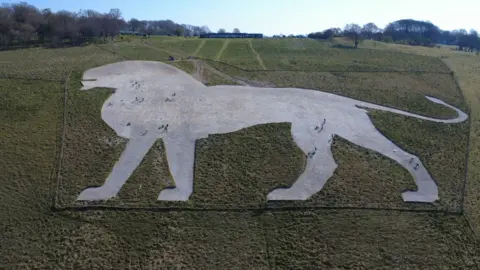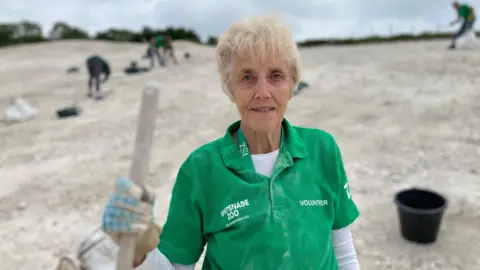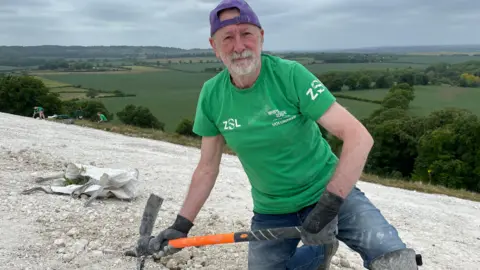Iconic hillside lion to be restored by zoo
 ZSL
ZSLA hillside lion that is seen as a regional landmark is due to be restored using 1,100 tonnes of chalk.
The animal near Whipsnade Zoo in Bedfordshire is thought to be the largest hill figure in England.
The zoo said maintaining the lion was an "enormous" job because of weed growth, but that new chalk would make the task easier.
Volunteer Anne James, who helped remove weeds, described the project as "fantastic".
 SAM READ/BBC
SAM READ/BBCMs James, 74, regularly takes a rake to the steep slope to remove unwanted plants, and was volunteering there on Thursday.
Her mother saw construction of the lion in the early 1930s and her children "loved it".
After two years of volunteering to clean up the lion she said "everybody is saying how wonderful it is to see it again".
 SAM READ/BBC
SAM READ/BBCIn 2023, the former Mayor of Dacorum Gbola Adeleke said he was concerned the figure was not being maintained properly and he offered to buy it.
The zoo said it was not for sale.
Horticulture team leader Ben Mawhood said maintaining the lion was an "enormous" job.
He said the work "got a lot harder" in the 1980s when the area was declared a Site of Special Scientific Interest, which meant pesticides could not be used and weeding must be done by hand.
 SAM READ/BBC
SAM READ/BBCVolunteer David Jones, 75, said the lion was an "iconic part" of his life and a year ago the lion looked "green" because of the number of weeds.
He said the lion should look "brilliant" once the work was completed.
New chalk was last added in 2018 and the zoo said it wanted the lion to look "spectacular" for next year's 200th anniversary of the Zoological Society of London, the charity that runs the zoo.
The 147m-long (483ft) structure was designed by RB Brook-Greaves and was covered in World War Two to prevent it from assisting German pilots with navigation.
The new chalk is due to be laid this summer.
Follow Beds, Herts and Bucks news on BBC Sounds, Facebook, Instagram and X.
